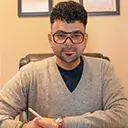Dealing with hair thinning or bald spots? PRP Hair Treatment for Hair Loss might be the game-changing solution you’ve been looking for. This advanced, non-surgical treatment uses your platelet-rich plasma to stimulate hair growth naturally. Many individuals struggle with hair loss in silence, often feeling discouraged as conventional treatments fail to deliver. But what if the secret to thicker, healthier hair lies within your blood? In this blog, we’ll explain how plasma therapy works, what results you can anticipate, and why it’s gaining popularity among both men and women dealing with hair loss.
What Is PRP Hair Treatment and How Does It Work?
PRP (Platelet-Rich Plasma) therapy is a restorative treatment that taps into your blood’s natural healing properties to promote hair growth. A small blood sample is taken, usually from your arm, and then placed in a centrifuge to separate the platelet-rich plasma from the other components of your blood. This concentrated plasma, rich in growth factors, is then injected into the scalp where hair thinning or loss has occurred.
The idea is to boost natural hair follicle activity and promote new hair growth by using your body’s regenerative capabilities. PRP has been used in various fields of medicine, including orthopedics and dermatology, for wound healing and tissue regeneration, and it’s showing great promise in trichology (the study of hair and scalp health).
The Science Behind Platelet-Rich Plasma Therapy
Platelets are blood cells known for their role in clotting and healing. They also contain powerful growth factors that stimulate cell reproduction and tissue regeneration. When injected into the scalp, these growth factors enhance blood supply to hair follicles, prolong the growth phase of the hair cycle, and reduce inflammation—creating a healthier environment for hair to thrive.
Studies show that PRP injections can increase hair density and diameter, reduce hair shedding, and help reactivate dormant hair follicles. While results can vary, many patients see significant improvement in hair volume and thickness over several months.
Who Can Benefit from PRP Hair Treatment for Hair Loss?
PRP therapy is ideal for individuals in the early stages of hair thinning or those experiencing pattern baldness (androgenetic alopecia). Both men and women can benefit, especially if they still have some active hair follicles in the thinning areas. It’s also suitable for people looking to enhance results from other treatments like hair transplants or medications.
However, it may not be effective for complete baldness or scarring alopecia, where hair follicles are permanently damaged. A consultation with a dermatologist or trichologist can help determine if PRP is the right choice for your specific condition.
PRP vs. Traditional Hair Loss Treatments: What Sets It Apart?
Unlike over-the-counter topical solutions or oral medications that may cause side effects or require daily use, PRP offers a natural, drug-free alternative. It stimulates your biological repair processes, making it a low-risk option with minimal downtime.
While medications like minoxidil or finasteride work to prevent further loss, PRP actively promotes new growth. Plus, because it uses your body’s plasma, there’s no risk of allergic reactions. It’s also a good complement to other therapies, enhancing their overall effectiveness.
What Happens During a PRP Hair Restoration Session
The whole process usually lasts between 60 to 90 minutes. It starts with drawing a small amount of blood, which is then spun in a centrifuge to separate the PRP. The scalp is then cleaned, and a topical numbing agent may be used to minimize any discomfort.
Using fine needles, the PRP is carefully injected into targeted areas of the scalp. Some providers may also combine PRP with microneedling to improve its absorption and effectiveness. After the session, you can resume most normal activities, though it’s best to avoid strenuous exercise or hair treatments for 24-48 hours.
Is PRP Hair Treatment Painful? Side Effects and Recovery Explained
Most patients report minimal pain, often describing the sensation as mild pressure or pinching. Any mild discomfort is typically manageable with over-the-counter pain medications. Side effects are rare but may include temporary redness, swelling, or tenderness at the injection site.
Recovery is quick, with no need for time off work or major lifestyle changes. You can typically wash your hair the next day and return to your normal routine within 24 hours.
How Many PRP Sessions Are Needed for Noticeable Hair Growth?
A standard PRP hair restoration protocol involves 3 to 4 initial treatments spaced about a month apart. Afterward, follow-up sessions every 4 to 6 months are recommended to maintain the results. Some individuals may notice improvement within a few weeks, but most see visible changes after the third or fourth session.
Consistency is key. Following your provider’s recommended schedule and combining PRP with a healthy scalp care routine can optimize long-term results.
Before and After PRP Hair Treatment: Realistic Results You Can Expect
While PRP isn’t a miracle cure, it offers a safe and effective way to regain fuller, healthier hair. Expect to see gradual improvements in hair thickness, reduced shedding, and increased volume. Outcomes can differ depending on factors such as age, genetics, and the severity of hair loss.
Many patients experience renewed confidence and satisfaction with their appearance after completing a series of PRP sessions.
Conclusion
PRP Hair Treatment for Hair Loss is revolutionizing the way we approach hair restoration. Tapping into the regenerative power of your blood offers a natural, safe, and effective solution for thinning hair. Whether you’re just beginning to notice hair loss or looking to enhance existing treatments, PRP could be the solution you need to regain confidence and achieve healthier hair.








